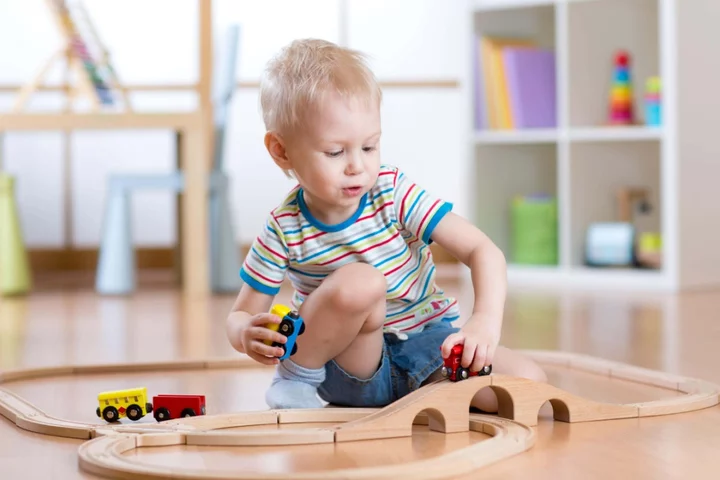
Holiday childcare costs up with fewer places available, survey finds
Fewer than a quarter of local authorities in England have enough holiday childcare provision for parents working full-time and costs have risen across Great Britain since last year, new research has found. Six weeks of summer childcare for each school-age child could cost almost £1,000, according to the Coram Family and Childcare charity’s annual survey. It said families in Great Britain face costs of £943 per child for this holiday period, which is £538 more than they would pay for after-school childcare in six weeks of term time. The research, based on surveys from local authorities in England, Scotland and Wales between April and June, found that the cost of holiday childcare has risen 3% since 2022. A place at a holiday club now costs an average of £157 per week – 2.3 times higher than the cost of an after-school club during term time, the charity said. Wales has the highest weekly price at £168, followed by Scotland at £157 and England at £156. While costs have risen, availability has decreased, according to the charity, with just 24% of local authorities in England saying they have enough holiday childcare for parents working full-time, down 2% on last year. Provision for eight to 11 year-olds has dropped by 7% on last year, with 23% of local authorities saying they have enough for this age group. The high of cost of holiday childcare is going to put a further strain on families’ already stretched budgets Megan Jarvie, Coram Availability of holiday childcare for disabled children in England has also continued to fall, Coram said, with just 5% of local authorities reporting they have enough to meet local demand, down from 7% in 2022. In Scotland, there has also been a drop in the proportion of local authorities reporting sufficient childcare – down 15% for 12 to 14 year olds, down 14% for children living in rural areas, down 12% for parents working full time and down 11% for eight to 11 year olds. No local authorities in Scotland reported having enough holiday childcare in all areas for disabled children, working parents, parents working atypical hours or children in rural areas. While Wales also has low levels of sufficient childcare for disabled children (5%) and 12 to 14 year olds (5%), the proportion of local authorities reporting sufficient childcare in all areas across all categories of holiday childcare, except parents working atypical hours and children in rural areas, has risen. Local authorities in Wales report the highest level of sufficiency of holiday childcare in all areas for parents working full time (18%), followed by four to seven year-olds and eight to 11 year-olds at 14%. Costs and availability of holiday childcare varies depending on where families live, the charity said, stating that parents in inner London pay up to 25% more than those in the East of England – £177 per week compared to £142. In the East Midlands, some holiday childcare places cost 104% more than the national average, while others are 58% less, Coram said. The charity is calling on the Government to extend childcare funding announced in the Spring Statement to include support during school holidays. Megan Jarvie, from Coram, said: “The high of cost of holiday childcare is going to put a further strain on families’ already stretched budgets. Even if families are able to afford these costs, many will struggle to find a place as we have found shortages right across the country. “Starting school doesn’t mean that childcare needs end. Instead, many find that it becomes more challenging to find options that are right for their family, particularly during the long school holidays. “New Government funding to help improve childcare options during term time is welcome – but families need childcare right through the year.” Coram is also calling on those in charge in England, Scotland and Wales to increase support for family information services to provide good quality holiday childcare information and ensure access to local provision that meets families’ needs, expand provision of school holiday activity and food programmes, and improve the accessibility of holiday childcare for children with special educational needs and disability (Send). Rapid price increases in essentials like food, housing and energy bills have left a growing number of the families we work with stretched and barely keeping their finances afloat Jamie Masraff, OnSide chief executive The Local Government Association (LGA) said “concerted investment and recruitment of quality staff” is needed to ensure correct provision for disabled children, and said it was “disappointing” that the Government had not extended childcare support to include summer holidays. Councillor Louise Gittins, chair of the LGA’s children and young people board, said: “While councils recognise the importance of ensuring there is sufficient provision available for children with Send, it can be difficult to ensure the right provision is available, particularly given the challenging situation that many providers face at the moment.” A Department for Education spokesperson said: “Our Holiday Activities and Food (HAF) programme, backed by £200 million per year to 2025, provides healthy meals, enriching activities and free childcare places to children from low-income families over the holidays. “We are also investing £30 million to test new and innovative approaches to short respite breaks for families of children and young people with special educational needs or disabilities.” Youth organisation OnSide called for the HAF scheme to be expanded to working parents, saying it is “increasingly hearing from working families who don’t qualify but are struggling to afford holiday clubs”. Its chief executive, Jamie Masraff, said: “Rapid price increases in essentials like food, housing and energy bills have left a growing number of the families we work with stretched and barely keeping their finances afloat. For too many, there’s simply nothing left to pay for vital summer childcare.” Read More Charity boss speaks out over ‘traumatic’ encounter with royal aide Ukraine war’s heaviest fight rages in east - follow live How to create a kitchen herb garden What is trail running and should we all be doing it? These are the women making waves in the cycling world
2023-07-18 15:53
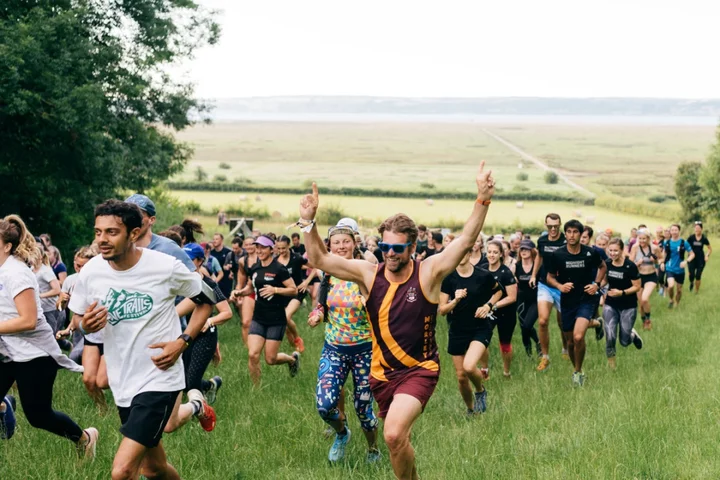
What is trail running and should we all be doing it?
With so much of the gorgeous countryside on our doorsteps, or a train ride away unexplored, we all are looking for new ways to get out and about. Trail running could be the adventurous workout that helps us do just that, as it combines hillwalking, running and hiking, taking runners to remote corners of the planet, and travelling the world in their trainers. With sports brands like Nike, Salomon and Vivobarefoot placing an increasing emphasis on their trail options for runners, and a gradual increase in Google searches for ‘trail running’ over the past five years, what actually is it? “Technically speaking, trail running is a form of running that takes place on varied terrains, away from paved paths or tracks,” says Jodie Gauld, run leader for Love Trails Festival. “However, it’s so much more, it’s a special feeling and a welcoming community.” The benefits “I find trail running very calming, and my focus will be very present. You’re typically in nature, so rather than modern distractions like cars, bustling streets and flashing signs, you can instead be in the moment of your running and in awe of your surroundings, which can give life a new perspective on what really matters,” Gauld reflects. There is less focus on speed and more on experience. “Trail running can also be very playful. It’s typically less serious, because the nature of running over varying terrains and up and down different gradients, means pacing and timing are less controllable or comparable,” she says. “Then, even if you hit a path with a good rhythm, you still have to concentrate, because there could be obstacles. You can hit an ultimate high – your focus becomes super-zoned, while your pace is good and you feel like you’re flying.” It’s easy to find community in trail running, because it’s an equaliser. “Because trail running is less about pace, it’s really inclusive. Seriously, if you do a trail race, the first question won’t be about your time, it’ll be about your experience,” says Gauld. “These factors and so many more, mean that trail running attracts a wonderful, supportive community. I’ve run all my life and have been knowingly trail running for over a decade, and don’t think I’ve ever met another trail runner who hasn’t been encouraging and friendly.” The required kit “While road shoes will be fine on hard-packed trails, you’ll get even more fun with a pair of trail shoes. Trainers specifically designed for the trails will have grip for the varying terrains, and will save you slipping around,” Gauld continues. When looking for the right shoes, Ben Le Vesconte, head coach at Vivobarefoot says “Look for wide toe boxes which allow your toes to spread, to ensure you remain balanced and stable on the trail.” Next, he recommends looking for thin soles, so you can feel the trail underneath your feet. “It will help you feel the changing terrain, allowing you to react quickly and improve your stability. The more cushioning you add, the less you feel. “Think about the grip you choose, typically thicker and longer lugs [small points of raised rubber lining the outsole] are best for muddy terrain, with smaller lugs best for firmer terrain. If it’s wet weather or waterlogged terrain, you want a shoe that drains well and for the heat, it should be very breathable,” he explains. Your kit is more important than it is for road running, because you’re likely to be away from access to help, and there are more things that can potentially go wrong. “With this in mind, I typically take my running vest or a hydration pack, no matter how short the distance, in which I’ll pack my phone – for photos but also safety – water, snacks, a foil blanket, a basic first aid kit, a waterproof and possibly spare layers,” says Gauld. “I also have a GPX watch, mainly for the mapping tools, but this is expensive, and there are loads of accessible mapping apps on phones now.” The risks “In a lot of trail races, there will be a kit list – this will be for safety reasons and encourages respect in nature where the conditions can change very quickly. I started a race in nearly 30-degree heat, and within just a few hours, we were in hypothermic conditions and hail storms. I finished that race – while others more experienced than me dropped out – because I had all the kit,” Gauld reveals. “Of course, like any activity, there are things to be wary of. When you’re starting, take your time and get used to the uneven and varied terrain,” says Matt Buck, a trail running coach, owner of Running Adventures and guide runner for Love Trails Festival. “Make sure you take a friend, or at the least tell someone where you are going, and always have a phone on you in case you need to call for help. Take it slow, and you will be fine.”
2023-07-18 15:26
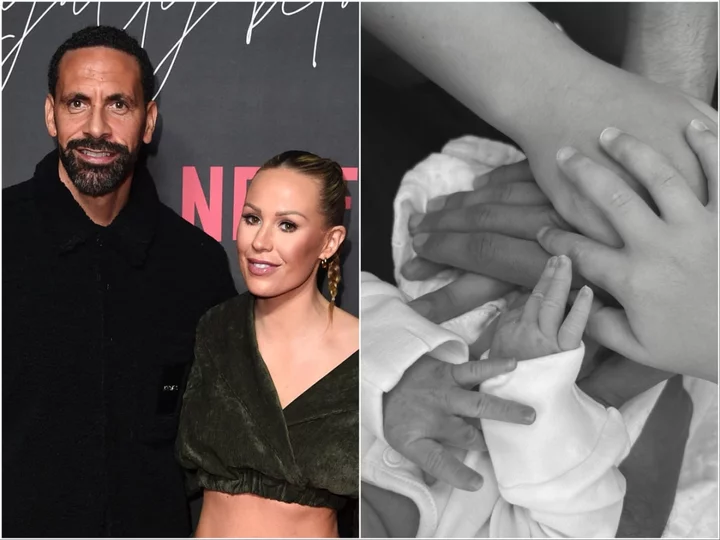
‘Our strong little girl’: Kate Ferdinand gives birth to second child with husband Rio Ferdinand and reveals sweet name
Kate and Rio Ferdinand have welcomed their second child, a baby girl. The couple celebrated their daughter’s arrival on social media, writing on Instagram: “Shae Ferdinand. 10.7.23 Our strong little girl,” with a white heart emoji. They also shared a photo of the baby’s hands, with the hands of Shae’s siblings resting on top. The former England football player, 44 and The Only Way is Essex star, 32, have been married since 2019. They already share a two-year-old named Cree, born December 2020, and Kate is stepmother to three children from Rio’s last marriage. Rio is father to Lorenz, 16, Tate, 14, and Tia, 11, through his marriage to his late wife Rebecca Ellison, who died in 2015 after being diagnosed with breast cancer. Announcing Kate’s pregnancy back in January, the pair shared a video on Instagram, in which Kate unbuttons her coat to reveal her baby bump underneath her dress. ​​A smiling Kate cradles her hand over her belly, with Minnie Riperton’s “Lovin’ You” playing in the background of the clip. “We’ve been praying for you,” she captioned the post. Friends of the couple have been sharing their best wishes for the new arrival to the family and complimented the choice of Shae’s name. The Only Way Is Essex star Fearne McCcan, who recently welcomed a newborn daughter named Finty, wrote: “Congratulations, I love her name.” Another TOWIE star Billie Shepherd wrote: “Congratulations to you all.” The official Manchester United Instagram account wrote “Congratulations” and posted a red heart emoji. The couple previously lost a baby last year. In July 2022, Kate revealed that she had suffered a miscarriage, after finding out the baby “had no heartbeat” at her 12-week scan. “So much to say, but somehow I can’t find the words. Absolutely devastated & heartbroken,” Kate said at the time. “But couldn’t be more grateful for the hugs I got from my big(er) babies coming through the door when we arrived home.” Kate has been vocal about being a mother to stepchildren, and her journey in parenting in a “fully blended family”. In January, Kate launched her modern parenting handbook How To Build A Family. On Instagram, the author wrote that she wished she had been given a handbook when she became a stepmother. Read More American travellers spark backlash after claiming that Europeans ‘don’t believe in water’ while on trip abroad Cruise line apologises after passengers witness dozens of pilot whales being slaughtered Sofia Vergara and husband Joe Manganiello reportedly divorcing after seven years of marriage Lindsay Lohan gives birth to her first child What is trail running and should we all be doing it? Today show star Jill Martin diagnosed with breast cancer
2023-07-18 15:19

Lindsay Lohan gives birth to her and husband Bader Shammas’ first child, a son
Lindsay Lohan has given birth to her first child, a son named Luai, according to reports. On Monday 17 July, Page Six reported that a representative for Lohan, 37, had confirmed the Freaky Friday star and her husband Bader Shammas had welcomed their first child together. “The family is over the moon in love,” her representative said in a statement to the outlet. According to Page Six, Lohan and Shammas’ son was born in Dubai, where the couple lives. The exact date of the baby’s birth is unknown. As for the name the couple chose for their son, the baby’s name, which is a popular Arabic name for boys, means strong and steady, or shield or protector. The Independent has contacted a representative for Lohan for comment. The baby news comes after Lohan celebrated her son’s impending arrival with a recent look at the infant’s beach-themed nursery. In photos shared this week, the actress showed off the nursery, which included a wall painted with a beach mural and a nautical-themed crib. Lohan first announced that she was expecting her first child in March, when she shared a photo of a “coming soon” onesie. “We are blessed and excited,” she wrote in the caption. In April, Lohan shared photos from her baby shower, which was attended by friends and family. “Good times. So grateful for all of the wonderful people in my life,” she captioned the photos. Lohan opened up about becoming a mother during an interview with Allure in June, where she revealed that she couldn’t wait to become a parent. “I can’t wait to see what the feeling is and what it’s like to just be a mom,” Lohan said. “Happy tears. That’s just who I am. Though now, it’s probably baby emotion. It’s overwhelming in a good way.” Lohan announced her engagement to financier Shammas in November 2021. In June 2022, Lohan revealed that she and Shammas had exchanged vows when she referred to her partner as her “husband” on Instagram. Read More Pregnant Lindsay Lohan reveals she turned to Jamie Lee Curtis for parenting advice Jamie Lee Curtis shares sweet tribute to pregnant ‘film daughter’ Lindsay Lohan Today show star Jill Martin diagnosed with breast cancer Melanie Skyes reveals she has been diagnosed with Tourette’s syndrome These are the women making waves in the cycling world
2023-07-18 04:20
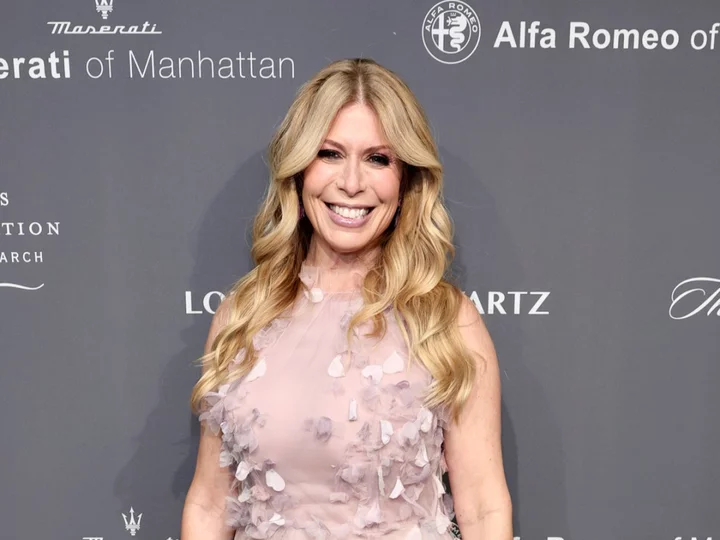
‘Today’ show star Jill Martin diagnosed with breast cancer after testing positive for BRCA gene
Today show star Jill Martin has been diagnosed with breast cancer. On 17 July, the 47-year-old lifestyle contributor revealed on Today that she had been diagnosed with breast cancer, just one week after she tested positive for the BRCA gene – inherited gene mutations that can increase the risk of developing breast cancer. In an essay shared to Today.com, the TV presenter explained that she learned of her diagnosis on 26 June. Her doctor had recently suggested she get genetic testing due to her family history with breast cancer, which revealed she had tested positive for the BRCA2 gene. Martin elected to undergo preventive bilateral mastectomy, because she had a 60 to 90 per cent chance of developing breast cancer. However, less than a week later, an MRI scan revealed that she had already developed breast cancer. “I am telling this story now because I couldn’t go through months of operations, and start to recover both physically and mentally, without shouting from the rooftops telling everyone to check with their doctors to see if genetic testing is appropriate,” Martin wrote in her essay. The BRCA genes – an abbreviation for “BReast CAncer gene” – are two different genes that have been found to impact a person’s chances of developing breast cancer. There are two BRCA genes, BRCA1 and BRCA2, which normally help repair DNA breaks that can lead to certain cancers. However, when there is a mutation in the BRCA gene, it can no longer be effective in preventing breast cancer. According to the National Breast Cancer Foundation, the carrier of the mutated gene can also pass a gene mutation down to their offspring. It’s been found that people with a BRCA1 or BRCA2 mutation have a higher risk of being diagnosed with breast cancer. It’s estimated that 55 to 65 per cent of women with the BRCA1 mutation will develop breast cancer before age 70, while approximately 45 per cent of women with a BRCA2 mutation will develop breast cancer by age 70. Martin revealed that she will be having a double mastectomy, which will then determine her treatment plan moving forward. After her surgery, she also plans on having her ovaries and fallopian tubes as part of the preventative surgery process, because her chances of getting ovarian cancer are now 20 per cent higher, Martin said. “By the time I recover from my first surgery, I hope that many of you will know your results and can make proactive decisions with your doctors, families and loved ones,” she said. “That is the silver lining to this mess for me. It is what is keeping me going and giving me strength.” The Today show contributor explained that, although she had a clear mammogram test back in January, her mammogram still missed the presence of breast cancer that was later picked up by the MRI scan. “I am talking about this not to scare you, but to raise awareness so that maybe you can be tested and identify a BRCA or other genetic mutation earlier,” Martin wrote. “If I had known I was BRCA positive, I would have gotten screened more regularly, with an MRI alternating with my mammograms.” “What I didn’t know before this experience was that an MRI can pick up cancers that mammograms miss,” she continued. “So while my mammograms missed the presence of breast cancer, an MRI might have helped me catch it earlier.” Mammograms miss one in eight breast cancers, according to the American Cancer Society. For those who test positive for the BRCA gene, the American College of Obstetricians and Gynecologists recommendeds screening for breast cancer with an MRI starting at age 25, and mammograms at age 30. Martin added that earlier testing might have allowed her “the opportunity to have preventative surgery,” she said, “which is something I had planned to do only days before I found out that I actually had cancer.” She wrote: “Different people cope in different ways; for me, I am not hiding under the covers crying. Instead, I want to do everything I can to beat this and protect my family.” Read More Sarah Ferguson says late Queen’s corgis were unimpressed by her post-breast cancer surgery recuperation Country star Morgan Wade reveals plans for double mastectomy after testing for breast cancer gene Former NBC anchor reveals she underwent mastectomy after testing positive for gene that increases cancer risk Sarah Ferguson says corgis were unimpressed by her post-surgery recuperation Sarah Ferguson sweetly honours Queen Elizabeth’s memory amid cancer diagnosis Sarah Ferguson says breast cancer diagnosis was ‘scary’ for Eugenie and Beatrice
2023-07-17 22:21

Melanie Skyes reveals Tourette’s syndrome diagnosis: ‘Wired a completely different way’
Melanie Sykes has revealed she’s been diagnosed with Tourette’s syndrome. The 52-year-old I’m A Celebrity... Get Me Out of Here! star revealed the news of her diagnosis on her close friend Alan Carr’s podcast. Speaking of her diagnosis, Sykes said she’s “wired completely differently” and is “only now” understanding the impact of the neurological disorder on her life. Tourette’s syndrome may cause sudden unwanted and uncontrolled rapid and repeated movements or vocal sounds called tics. During the interview, when Carr assured Sykes that it was fine to swear during the conversation, she said: “Oh good, but I’ll try not to, because I’ve just discovered I have Tourette’s. “I describe in the book (Illuminated: Autism and all the Things I’ve Left Unsaid) how I laugh at really inappropriate things. I am wired a completely different way and I’m only just understanding it. “I used to think, ‘What’s wrong with me?’ Now I know it’s everything that’s right with me,” Sykes added. The new diagnosis comes two years after Sykes was diagnosed with autism. The presenter, who is known for shows like Let’s Do Lunch with Gino D’Acampo, said after the diagnosis that “finally, so many things made sense”. Sykes first revealed her diagnosis in an email to readers of her magazine, The Frank. She wrote that finding out she was on the autism spectrum, which can affect the way people with autism communicate and interact with others, was “life-affirming”. She has since been welcomed into the autistic community with messages from mothers of children on the spectrum and adults diagnosed late in life. “They’re so happy I’m talking about it, normalising it,” Sykes told the magazine. “Some people who were too embarrassed to tell anyone now feel they can. “It makes me extremely happy to know I’ve helped.” Sykes’ diagnosis comes after singer Lewis Capaldi recently announced he was taking a break from touring for the “foreseeable future” due to his Tourette’s. The “Someone You Loved” singer struggled with his performance on the Pyramid Stage at Glastonbury this year because of his tics, and appeared visibly moved by the huge audience who helped him sing his song. Following the show, Capaldi said he is “still learning to adjust to the impact of my Tourette’s” and needed to spend time taking care of his physical and mental health before he could return to touring. Read More Kylie Jenner and Jordyn Woods reunite four years after Tristan Thompson cheating scandal Nicole Kidman defends her controversial Vanity Fair mini skirt cover Alan Titchmarsh warns against ‘ill-considered’ rewilding trend in domestic gardens These are the women making waves in the cycling world Nappy changes and tantrums over Michael Gove: I took my toddler to a music festival Demi Lovato says she still struggles with vision, hearing impairment after overdose
2023-07-17 19:51
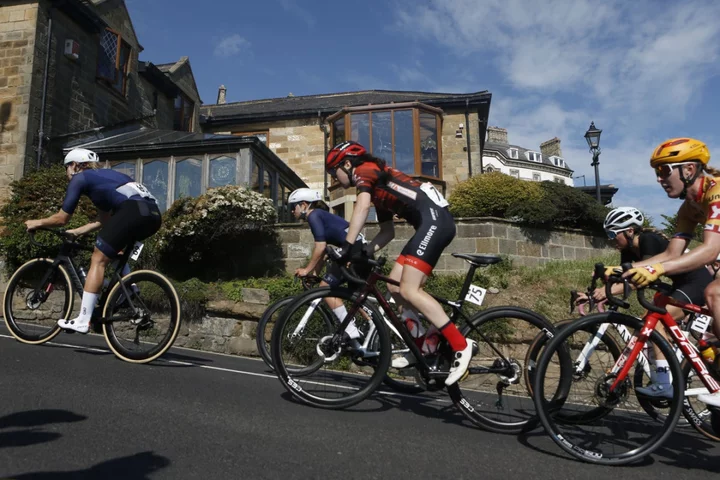
These are the women making waves in the cycling world
With the Tour de France Femmes kicking off on July 23 for a week of thrills, cycling and entertainment, it will also be highlighting the women making this sport what it is. In its second official year as the Tour de France Femmes, races of this calibre have happened in the past, but never on such a global stage. So, what is happening in the women’s cycling scene, how did we get here, and why does it matter?The women changing the game Women are working hard to bring the sport to people of all backgrounds. “The Amy D Foundation, Black Girls Do Bike, Get Women Cycling and Little Bella’s are all fantastic organisations, helping and encouraging women – and young girls – to get into cycling in spite of age, race and background,” explains triathlon cyclist Kate Dunbar. This year’s Tour de France Femmes will have a determined line-up of women championing the sport. Who should we look out for? “Annemiek van Vleuten was a fantastic contender in 2022, and I expect her to do well again this year. It’s her final year ahead of retirement, so she will want to do well,” says Dunbar. “The course this year is suited to van Vleuten’s skill set and she will have a stronger Movistar team to support this target, including Sarah Gigante and Liane Lippert.”A growing sport There has, in recent years, been a marked increase in the interest of this sport. “There is, without a doubt, a rising interest in women’s cycling,” says Amanda Braverman, global director of brand marketing at cycling tech brand, Hammerhead. “With more events geared towards women’s cycling and growing viewership in the Tour de France Femmes year on year, we’re seeing measurable gains in both interest and access to the sport.” “But we can’t ignore the fact that The Women’s Tour in the UK was cancelled, even though sponsors saw a huge return on investment in 2022, and the Women’s World Tour race Vårgårda, West Sweden was cancelled permanently after 25 years,” says Dunbar. “Even though we are seeing bigger efforts from organisations and the industry as a whole, as with most women’s sports, the Tour De France women’s tournament is still vastly overshadowed by the men’s – we still need more support and encouragement to boost women’s cycling,” she stresses. Cycling as a tool for liberation There is an important link between cycling and women’s liberation, that goes back a long way, beyond racing, to basic transportation. “It gave women social mobility and allowed them to travel faster and further than ever before. They could cycle further for work opportunities, and it also advanced fashion, as women needed cycling-suitable clothing. It allowed women to take control of their fitness and health in an easy way,” says Dunbar. Women’s cycling also subverted norms. “Cycling challenged femininity in the late 19th century, and bicycles were used heavily to support the English suffragettes movement. The bicycle became – and to this day remains – a symbol and a tool of female empowerment, independence, freedom and opportunity,” says Braverman. Trailblazers Some hugely inspiring women came before today’s Tour de France Femmes stars. “Some of the first women to get involved in cycling were true trailblazers, cycling as early as the late 1800s,” says Braverman. “Montreal-based Louise Armaindo raced on the high wheel, also known as the penny-farthing, which was much more dangerous than the modern bicycle. Armaindo set the North American long-distance record in 1872, and was praised as “the champion female bicycle rider of the world”. She also credits ‘The Big Five’ – Lizzie Glaw, Helen Baldwin, May Allen, Tillie Anderson, and Dottie Farnsworth – an influential group of female cyclists who raced in the 1890s, fitting their racing careers into busy lives that often included their families and other jobs. Today, there’s no denying defending champion van Vleuten leads the modern ‘big five’, but who else will be in the mix? Lorena Wiebes is likely to have another great first stage, Elisa Longo Borghini will give it her best shot, alongside the phenomenal Demi Vollering, and maybe Juliette Labous will make even more progress this year. Whatever happens, we are surely in for an exciting week of women’s sport.
2023-07-17 16:20

Damon Albarn predicts new Oasis album and tour
Blur frontman Damon Albarn is convinced his former Brit pop rivals Oasis are on the verge of a huge comeback with the singer insisting the 'road is clear' for them to reunite and release a new album
2023-07-17 15:24
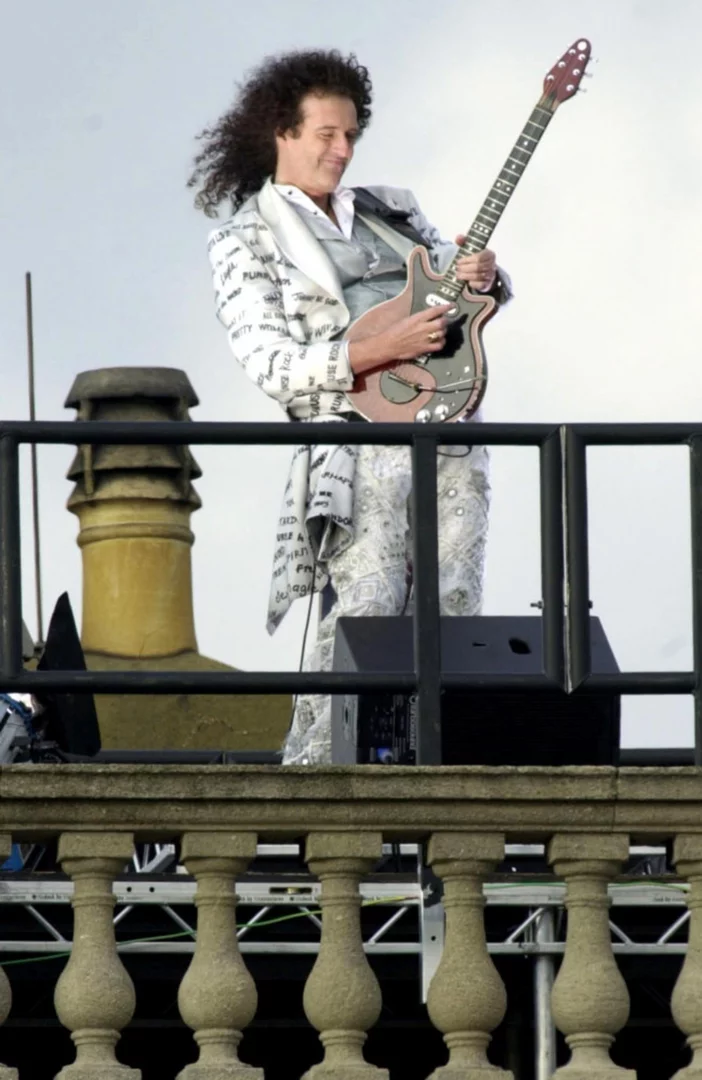
'Not impossible': Sir Brian May open to resolving differences with Glastonbury boss Michael Eavis
Sir Brian May has admitted it is "not impossible" that Queen could play Glastonbury one day and he's open to talks with Michael Eavis to debate their opposing views of culling badgers.
2023-07-16 15:25

Nappy changes and tantrums over Michael Gove: I took my one-year-old to a music festival
It’s just after 9pm and lilac hues have spread across Dorset skies, shadows extending over a panorama of marquee tops. Perfect conditions for the first night of End of the Road, whose Friday headliners – Black Midi, Battles and Fleet Foxes among them – are minutes away from stepping on stage. Yet, rather than slipping through the masses to grab a good spot, I’ve been back at my tent for an hour already. Having unfolded a stool in the last of the sun, simmering lentils and a mug full of boxed cab-sav for company, my one-year-old daughter, Nancy, has finally nodded off in the tent, unaware of earlier negotiations between her parents. After an afternoon watching bands from a lower-decibel distance as a family, it’s my wife who’s out tonight, enjoying her child-free break for freedom. Although, with the Pixies – a band beloved since teen years but never seen live – top billing on Saturday night, I felt confident in my call as “White Winter Hymnal” carried on the breeze. We’re a day into our first festival as a family of three, an experience already proving quite a journey. As a sometimes music journalist, I’d covered events across Europe over the past decade, adept at negotiating stage splits, balancing reporting duties and life-affirming experiences with willing accomplices. Of these, End of the Road has remained a regular fixture, an informal end-of-summer meet-up with industry colleagues and friends – as well as my chosen stag-do destination. With a one-year-old in tow, this year would mark a stark contrast. From the freshly purchased family-sized tent – the subject of substantial research and investment, and an attempt to win over a camping-averse wife – to the travel cot, buggy, strings of fairy lighting, endless layers, toys and first-aid trappings for every eventuality, the baggage was endless. Shoulders ablaze, I’d carried it all in as my wife kept our daughter entertained. Stepping into my role as responsible dad, I’d practised the tent’s set-up at home prior to arrival and, with a tangible sense of optimism about the weekend ahead, started separating pegs from poles. Yet, with the tent almost up, something unsettled me. What was that smell? Unzipping the bedroom it hit me. My earlier garden practice run had provided the perfect sheltered toilet for a visiting fox –  evidence of which no amount of wet-wipe scrubbing could remove, resulting in a showdown with the reluctant camper and a smell that would accent a weekend in which expectations were continuously lowered. After my wife crashed back in on Friday night, earlier than anticipated and hamstrung by a fast-developing cold, we wondered if we were up to the challenge. Nancy was having a nice time, happy tracking insects in the long grass or studiously inspecting the contents of her snack bag. But could this equally have been any other field? Had we been too exhausted and distracted to embrace the experience? By contrast, our camping companions had brought their five-year-old, who enthusiastically shared stories about favourite bands and the wicker dragonfly he’d crafted, as his dad talked about the surprise sets he’d happened upon the previous night. Perhaps we’d just taken all of this on too soon. The next morning, I nudged Nancy’s buggy around the site, stopping at the kids’ area, where a neckerchiefed uke player offered up nursery rhymes with instruments for children, which were seized upon with pleasure. Various childless friends were never far away, entertaining our daughter in bursts. Later, after reuniting with my wife, a highlight was bobbing to Los Bitchos’ buoyant afternoon performance with Nancy held aloft, as was a brief glimpse of Jockstrap packing out a small stage in the woods. Yet other moments – flailing nappy changes amid aghast onlookers, straying too close to the stage with a buggy as the light faded and the crowd surged – presented a sharp learning curve. Still feeling under the weather, my wife headed back to the tent with Nancy as the Pixies arrived, Frank Black’s substantial presence now underscored by a pang of guilt. After checking in and being signed off to stay out, I’d joined an excitable crowd for an unannounced late-night set at the Tipi stage, which, after turning out to be one of the tiny handful of bands I’d already seen that day – again sounded another minor chord on my tiny violin. As the skies cleared, we’d discovered corners along the way we’d otherwise never have seen and met a similarly dazed yet determined community of parents With my wife’s health deteriorating further overnight – diminishing her perception of fox piss, at least – we made the call to leave on Sunday morning and I hauled everything back to the car. On the long drive home, and hours before Covid would be confirmed, it had to be asked: had this been fun for anyone concerned? Was this festival too aptly named for a new dad trying to reconcile past and present lives? This all happened in the summer of 2022 and, unfazed, we tried again this year – albeit at the even smaller scale and decidedly family-friendly Kite Festival in Oxfordshire. While Nancy’s advanced age presented new challenges – tentative first steps now a confident swagger – her inquisitiveness also marked her out as the perfect festival companion. Expectations now firmly in check, we let ourselves be led by circumstance and proximity, stopping for whatever drew the eye rather than dashing from act to act, allowing us to slow down and see the world through her eyes. Occasionally we tag-teamed the lineup, each picking a couple of acts to witness unhindered by short attention spans (my wife took former PM John Major’s packed-out talk in the big top, I took Suede). Under the hot sun, our meeting point at the shaded children’s area also helped keep Nancy from turning pink in the sun. Clapping furiously at the end of shadow chancellor Rachel Reeves’s morning debate, her grasp on Labour’s manifesto pledges seems better than most – although this mimicry of crowd behaviour proves an endearing feature at later events, too. An uncontrollable tantrum during Michael Gove’s appearance at a panel discussion saw us quickly extract ourselves from the tent, drawing smiles from an audience impressed by the effectiveness of her heckle. Further priceless memories included dancing together at Candi Staton’s sundown set, Nancy with a brioche in each hand – ear defenders askew – visibly finding her feet. The following day the skies suddenly broke, with an electrical storm closing all stages, sending Birkenstock-clad families sprinting for cover. The one attendee thrilled by it all was Nancy, who careered around cackling as security attempted to keep punters from the marquee’s lightning-conducting metal poles. As the skies cleared, we’d discovered corners along the way we’d otherwise never have seen and met a similarly dazed yet determined community of parents. We still hadn’t nailed the performative kids-at-festivals thing – there was no trolley adorned with decoration or whimsical outfits – but felt comfortable that we’d struck the right balance, fulfilled by a shared experience led by the spontaneity of a child’s impulses. It marked a shift from any naive attempt to carry on with our lives as normal. An alternative, of course, is to leave your family at home. A couple of weeks ago I joined 250,000 others at Glastonbury, my own spontaneity given breathing space once more. Thrilling, yes, but also a weekend that at times left me seeking my small festival companion among the other attendees. I was temporarily overcome watching a daughter on the shoulders of her father as he introduced her to a favourite band, excitedly explaining each musician’s role. “How old? I’ve got one a similar age,” was shared with various others. Yet it was also at Glastonbury, as the temperature nudged into the thirties, that I spotted another dad – fixed grin but dead behind the eyes – pushing three irritable kids in a trolley up a shadeless slope. I nod my solidarity, before skipping off to the bar – relieved, this time, that’s not me. Bumping into Joe Goddard from Hot Chip, whose bandmates collectively call their kids the Micro Chips, he says that of all the children he knows, it’s those who have always been dragged to festivals who have proved the most rounded. Something that resonates with me as the Glastonbury hangover subsides and – reunited with my family – I start looking forward to carving out new shared experiences in crowded fields once more. Read More The earthy magic and lawless energy of being a child at Glastonbury festival Too cool to love these acts 10 years ago? This year’s Glastonbury is for you Music festivals have saved me so many times Demi Lovato says she still struggles with vision, hearing impairment after overdose Marina Diamandis says she has been diagnosed with chronic fatigue syndrome Should I keep my windows closed or open during a heatwave?
2023-07-16 13:51
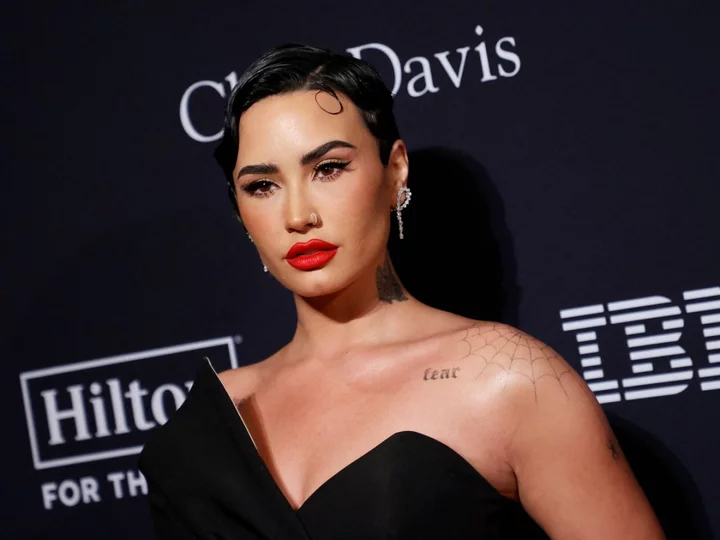
Demi Lovato says she still struggles with vision and hearing impairment after 2018 overdose
Demi Lovato has opened up about the lasting health struggles she continues to face following her 2018 overdose. The “Sorry Not Sorry” singer recently appeared on SiriusXM’s Andy Cohen Live, where she revealed that her near-fatal overdose left her with vision and hearing impairment. “I wouldn’t change my path because I don’t have any regrets,” she told host Andy Cohen on Wednesday 12 July. “The closest thing that I get to a regret is when I overdosed and I wish somebody had told me, one, that I was beautiful, because I didn’t believe it,” Lovato shared. “And two, I wish that someone would’ve told me that if you just sit with the pain, it passes.” “That overdose caused me a lot of - it actually caused a disability. I have vision impairment and hearing impairment to this day,” the 30-year-old singer said, even admitting that she doesn’t drive anymore due to “blind spots in [her] vision”. However, the Disney Channel alum went on to explain how the lasting effects of her overdose are a “daily constant reminder” throughout her sobriety journey. “Anytime I look at something - like, I have blind spots in my vision when I look at your face,” Lovato told Cohen. “And so it’s a constant reminder to stay on the right path, because I never want that to happen again.” In July 2018, Demi Lovato was rushed to the hospital after suffering “complications” from a reported overdose. She had previously celebrated six years of being sober. In her YouTube documentary series, Dancing with the Devil, which was released in March 2021, Lovato revealed that she became addicted to meth, heroin, and crack cocaine in the weeks before her overdose. “I’m surprised I didn’t OD that night,” she shared in the docuseries. “I just went to town. I went on a shopping spree. That night I did drugs I’d never done before. I’d never done meth before, I tried meth. I mixed it with [ecstasy], with coke, weed, alcohol, oxycontin. And that alone should have killed me.” Two weeks later, she added, she was “introduced to heroin and crack cocaine”. Lovato suffered three strokes and a heart attack during her overdose, leaving her with permanent brain damage. Lovato has been very open about her sobriety journey and mental health struggles. When the “Skyscraper” singer was diagnosed with bipolar disorder in 2011, Lovato shared that the diagnosis provided her with a sense of “relief” because she had spent “so many years struggling” with her mental health. “I was so relieved that I had finally had a diagnosis,” Lovato said at the Hollywood & Mind Summit in Los Angeles last May. “I had spent so many years struggling, and I didn’t know why I was a certain way in dealing with depression at such extreme lows, when I seemingly had the world in front of me just ripe with opportunities.” Lovato is now fully sober after initially adopting a “California sober” approach that involved marijuana and alcohol in moderation. “I no longer support my ‘California sober’ ways,” the singer said in an Instagram Story in December 2021. “Sober sober is the only way to be.” Read More Demi Lovato changed pronouns because explaining They/Them to people was ‘absolutely exhausting’ Demi Lovato explains why she was ‘relieved’ to be diagnosed with bipolar disorder Demi Lovato reveals she used opiates for first time at 13 Marina Diamandis says she has been diagnosed with chronic fatigue syndrome Should I keep my windows closed or open during a heatwave? How to sleep during hot weather, according to experts
2023-07-15 01:28
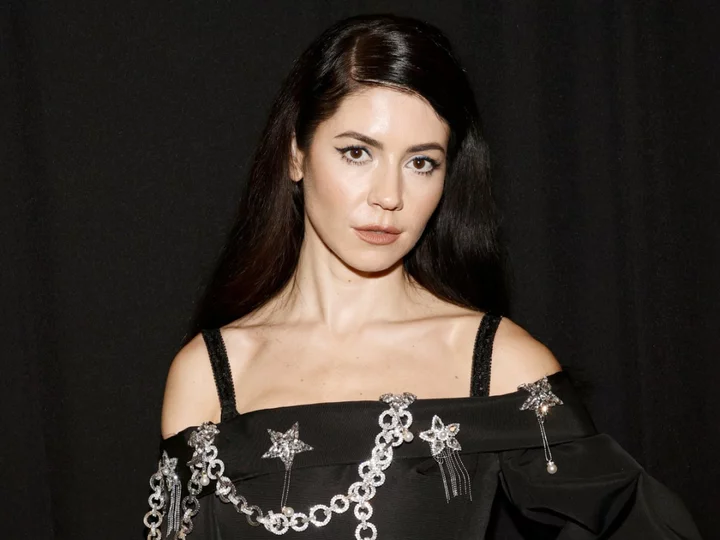
Marina Diamandis says she has been diagnosed with chronic fatigue syndrome
Marina Diamandis, known under her stage name Marina and the Diamonds, has revealed that she was recently diagnosed with chronic fatigue syndrome. The condition, also known as myalgic encephalomyelitis (ME), resulted in symptoms such as “deep fatigue, numbness, tingling, low appetite, brain fog, rashes, insomnia and a feeling of being ‘poisoned’ for so long”, the 37-year-old Welsh singer wrote in an Instagram update. Diamandis shared that she was only diagnosed with ME after “seven years of health issues”, adding that “it’s been hard to remember what healthy feels like”. “My baseline energy has been at 50 to 60 per cent for a long time,” she continued in her post. “Aside from a few periods of remission, the last seven years have consisted of relying on adrenaline and willpower to push me through each day. “Recovery started two months ago after an unusually bad flare-up that involved shooting pains and burning sensations all over my hands, legs and back,” Diamandis revealed. “After seeing countless doctors, I started working with a functional medicine practitioner to find the root cause of the symptoms.” Functional medicine is a form of alternative medicine that focuses on identifying and treating the root cause of a disease. It falls outside of mainstream healthcare and is not offered by the NHS – although the NHS has recommended the use of some alternative medicines like acupressure and manual therapy for a limited number of circumstances. In her post, Diamandis claimed that her symptoms “are a result of a hypersensitive nervous system” that developed in response to “chronic stress”. “My body has felt stuck in ‘fight or flight’ mode and there were many warning signs it gave me before the worst symptoms set in,” she wrote. Amid her treatment, which she claimed helps to “retrain the nervous system to regulate itself again”, the “Primadonna” singer added that she is “feeling better today than I have in a long time”. “My energy levels are around 65 to 70 per cent most days and the dips I have are shorter,” she said. “Healing is demanding a lot of my energy and attention right now, but the better I feel, the sooner I can get back to my creative life again. I worked yesterday for the first time in a while yesterday and it felt so good.” Diamandis also said that living with ME has given her a “deeper empathy for the millions of people who live silently with chronic illness”. “It’s hard to maintain optimism when the world feels like it’s moving on without you, but hope always exists. Answers always exist,” she said. “The body wants to heal – and what I’ve learned is that you have to work with it, not against it.” ME is a long-term condition with a wide range of symptoms, but the most common one is extreme tiredness. It can affect anyone, including children, but tends to develop between a person’s mid-twenties and mid-forties. An estimated 250,000 people in the UK suffer from ME, with around 17 million sufferers around the world. It is more common in women. According to the NHS, there is no cure for ME. Treatments that may help sufferers manage the condition include cognitive behavioural therapy, energy management and medicine to control symptoms such as pain and sleeping problems. Diamandis released her most recent studio album Ancient Dreams in a Modern Land in June 2021. She embarked on a world tour last year to promote the record. Read More I keep forgetting my dog’s birthday – could a luxury pet party make it up to him? From Princess Beatrice to Louis Theroux: Who is in the Royal Box on the 12th day of Wimbledon? Woman requires eye surgery after using social media hack to remove makeup Should I keep my windows closed or open during a heatwave? How to sleep during hot weather, according to experts Father reveals moment he realised he wanted to leave US and raise children in Spain
2023-07-14 22:18
